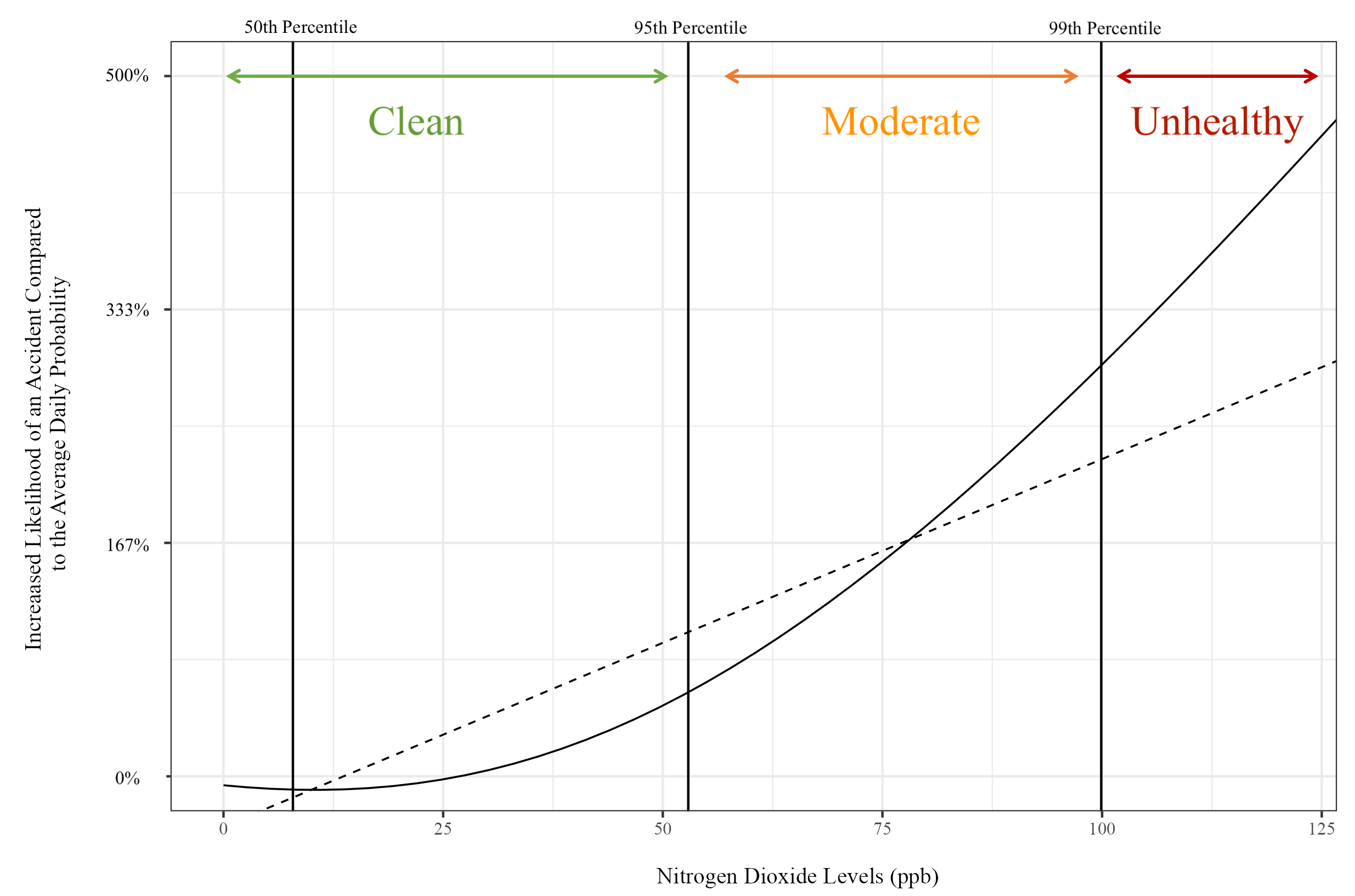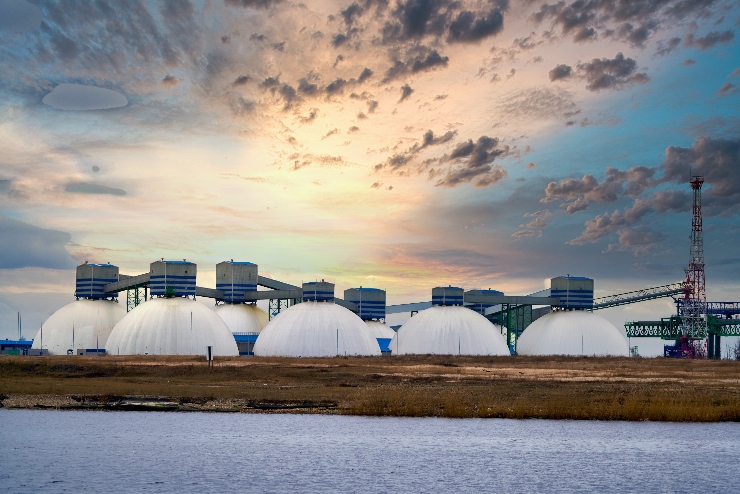Air pollution causes an estimated seven million premature deaths each year. A less known fact is that polluted air increases the likelihood of workplace accidents. Victor Lavy, Genia Rachkovski and Omry Yoresh monitor daily air pollution levels at 24,614 construction sites in Israel from 2017 to 2019 and link this data with information on daily accidents at each site. They find evidence of an economically and statistically significant effect of air pollution exposure on construction-related injuries and fatalities.
Omry Yoresh will be presenting this work on Monday at 2.30pm.
Nine out of 10 people worldwide breathe polluted air, which causes an estimated seven million premature deaths each year, according to a World Health Organization report. Research identifying and highlighting the potential effects of air pollution is in high demand. The effects of air pollution on society are a focus of a growing literature in many disciplines, including economics, that attempts to broaden the scope beyond direct health outcomes (see Aguilar-Gomez, Dwyer, Graff Zivin, and Neidell, 2022, for a recent survey).
We contribute to this literature by investigating the effects of air pollution on work accidents, which are significant and less studied factors for productivity in the labour market. Work-related accidents, with construction workers at particular risk, cause an estimated 360,000 deaths worldwide each year and an estimated 26.5 million disability-adjusted life years (DALYs), according to this World Health Organization and International Labour Organization 2021 report. Besides personal suffering, these outcomes also translate to significant productivity losses. According to a National Safety Council (NSC) report, in the US alone, the estimated productivity and wage losses from work-related accidents totalled 44.8 billion dollars in 2020. In the EU, in 2017, the costs of work-related accidents and illnesses accounted for around 3.3 per cent of GDP (Elsler, Takala, and Remes, 2017).
Using information from local monitors, we monitor daily local air pollution levels at 24,614 construction sites in Israel from 2017 to 2019 and link this data with information on daily accidents at each construction site, producing a total of more than 10 million daily observations. We find evidence of an economically and statistically significant effect of air pollution exposure on construction-related injuries and fatalities, even at subclinical levels. We identify the strongest effect from a major pollutant, nitrogen dioxide (NO2), the primary source of which is fuel combustion from transportation and industrial work.
We find that a 1 standard deviation increase in NO2 levels (going from median air pollution levels to the 85th percentile of pollution) increases the likelihood of an accident by 45 per cent compared to the average daily probability. As illustrated in Figure 1, we find that the strongest effects occur for highly polluted days, at levels associated with moderate and unhealthy pollution levels according to the US Environmental Protection Agency standards, the lower bound of which corresponds roughly to the 96th and 99th percentiles in our sample. At these levels, the likelihood of an accident is increased by a staggering 138 and 377 per cent, respectively, compared to levels classified as clean air (below 54 ppb, the 96th percentile).
Figure 1. The effect of increased air pollution on construction site accidents

Notes: The continuous line represents the estimated connection between NO2 levels and the probability of an accident at a construction site. The dashed line represents the liner connection. Increased likelihood of an accident compared to the average daily probability for clean air. The vertical lines indicate the percentile of the level of the pollution. The colours represent the ranges of clean air (green), moderate pollution (yellow) and unhealthy (red).
We support the causal interpretation of our results by looking at changes in pollution levels within each construction site and by accounting for other factors potentially associated with work accidents, such as wind, humidity, temperature levels, seasonality and the existence of other pollutants. We also take advantage of the random variation in wind direction, which carries the pollutant towards the construction site, to isolate the effects of pollution from alternative explanations. We also take advantage of the high frequency of measurements and the high density and spatial distribution of air pollution monitoring stations in our data, to instrument same day pollution with pollution levels from the night before and with pollution from measuring stations further away from the construction site, to further reinforce the causal inference of our results.
As a next step, we focused on the potential mechanisms of the effect. Physicians and epidemiologists have examined the effects of air pollution on health outcomes. They find that even short-term exposure to low levels of pollution might affect the cardiovascular and respiratory systems (Brook and Rajagopalan, 2007; Viehmann et al., 2015) as well as brain functioning (Forman and Finch, 2018), which in turn may cause fatigue, impaired motor function, lack of concentration, and impatience (Siegel and Crockett, 2013; Delgado-Saborit et al., 2021). These physiological outcomes provide potential mechanisms compatible with our findings, as fatigue and lowered cognition caused by pollution might increase the likelihood of a construction accident.
Interestingly, by examining the interaction of NO2 levels with worker fatigue and with cognitive stress, we find evidence that the detrimental effects of NO2 on accidents are exacerbated in conditions of strenuous physiological states of the workers such as those occurring in days with extreme heat, wind or humidity. Our setting and the finding linking the effects of pollution with cognitive strain may provide evidence of the importance of pollution exposure in mentally and physically strenuous settings beyond construction site work, such as those of first responders, physicians, and other high-stakes professions.
Policymakers can mitigate the detrimental effects of pollution in several ways. Reducing pollution by limiting the allowed emission levels, raising public awareness, facilitating mitigation of pollution through avoidance behaviour and improving the treatment of its negative effects are some of the potential focus areas of relevant interventions. In this study, we focus on policy related to facilitating pollution-avoidance behaviour. We use cost-benefit analysis to determine the economic viability of a government-subsidised shutdown of construction sites at times of extreme pollution. We incorporate our findings about the effects of pollution on the probability of accidents with reports from the Ministry of Finance, the National Insurance Institute, and the Central Bureau of Statistics on the costs accrued to the government due to construction accidents and the average costs of construction site closures.
Using this data, we then calculate the potential economic savings to the government of the decreased probability of an accident and find the maximum level of subsidy, conditional on local pollution levels, that the government can offer to each contractor to shut down their daily operations without accruing any losses. Each contractor can then decide whether it is beneficial to accept the offer given its incurred costs from closing down the site for the day. We find that, in our setting, the policy might become relevant for very high pollution levels and for construction sites on the low end of potential losses from temporary closures, when the probability of an accident is high enough that the expected benefits from avoiding worker’s insurance payouts are large enough to offset losses from construction site shutdown costs for the day.
Other mitigation channels are potential alternative or complementary solutions. These include targeted interventions based on data-driven predictions on construction sites prone to accidents; raising the awareness of contractors and workers to the potential detrimental effects of ambient air and providing coping strategies; Investments in safety measures, training, safety standards, scaffolding, individual pollution sensors, respirators, and other relevant equipment.
A worker’s death or severe injury has devastating consequences for the worker, their family and the community well beyond the economic costs estimated in this paper. Given the relatively high death and severe injury toll in construction work, we should do everything in our power to identify the causes and potential solutions which can mitigate this problem. In the current paper, we identified one such potential cause, air pollution, and suggested potential solutions and a road map to analyse their viability.
- This blog post is based on Heads Up: Does Air Pollution Cause Workplace Accidents? NBER WP 30715, presented at LSE Environment Week 2023.
- The post represents the views of its authors, not the position of LSE Business Review or the London School of Economics.
- Featured image provided by Shutterstock
- When you leave a comment, you’re agreeing to our Comment Policy.






